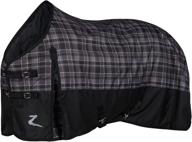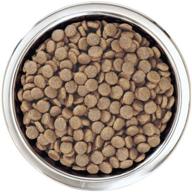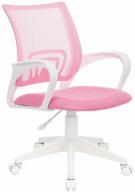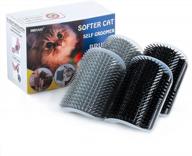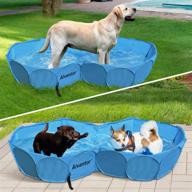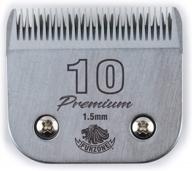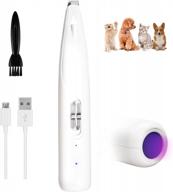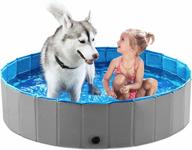How to select the right shears for your dog's coat type?
Choosing the right dog grooming shears is important to maintain your dog's coat health and make grooming easier and more effective. The key factors to consider are:
Coat Type
- For dogs with fine or medium coats, regular shears with shorter blades work well.
- For dogs with thick, dense coats like Poodles, longer blade shears glide through the coat better.
- For dogs with curly coats like Poodles, shears with a razor edge help cut the curls cleanly.
Coat Condition
- If your dog's coat is healthy, sharper shears provide a smooth cut.
- For dogs with damaged coats, use shears with micro-serrated blades to avoid splits.
Blade Material
- Stainless steel blades stay sharp longer and are easy to clean.
- Ceramic blades hold their edge extremely well for a smooth cut.
- Carbon steel blades are very sharp but require more frequent sharpening.
Always look for quality shears that feel balanced and comfortable in your hand. Investing in the right shears makes grooming faster and easier for both you and your dog!
How to properly sanitize dog grooming shears?
Properly cleaning and disinfecting your dog grooming shears is crucial for pet health and safety. Follow these steps:
Cleaning
- Rinse away any visible debris with warm water.
- Mix a small amount of mild dish soap with warm water. Use a toothbrush to scrub the blades.
- Rinse thoroughly with clean water and dry with a soft towel.
Disinfecting
Choose a disinfectant compatible with your shear's material:
| Disinfectant | Shear Material |
|---|---|
| 70% isopropyl alcohol | Stainless steel, carbon steel |
| Quaternary ammonium | Stainless steel, carbon steel, ceramic |
| Hydrogen peroxide 3% | Stainless steel, ceramic |
- Soak shears for 5-10 minutes in disinfectant.
- Rinse thoroughly and wipe dry.
Similar products
Maintenance
- Sharpen regularly for optimal performance.
- Lubricate pivot screws periodically.
- Store in a dry, debris-free case.
Proper sanitizing removes disease-causing germs and keeps your dog grooming tools in top shape.
How to hold and use dog thinning shears correctly?
Using thinning shears properly helps thin out your dog's coat evenly for a well-blended finish. Follow these tips:
Choosing the Shears
- Medium or large shears work best for larger dogs.
- Smaller shears give you more control for toy breeds.
- Straight blades are good for general thinning.
- Toothed or serrated blades remove more bulk.
Holding the Shears
- Hold in your dominant hand with finger loops or thumb ring.
- Keep your grip firm but relaxed to allow fluid motion.
- Position your thumb near the pivot screw for control.
Using the Shears
- Work in sections, lifting the coat up with your free hand.
- Keep the blades parallel to the dog's body as you cut.
- Use a sliding motion rather than chopping for a smooth finish.
- Avoid cutting too much at once, removing only 1/3 of the coat section.
- Blend sections together softly rather than leaving hard lines.
Practicing on a stuffed toy can help perfect your scissoring technique. Go slowly, and check often to avoid over-thinning the coat.
How to sharpen and maintain dog grooming shears?
Regular sharpening and maintenance keeps your dog grooming shears performing at their best. Follow these tips:
Sharpening
- Use a professional shear sharpener annually or when blades seem dull.
- In between, use an at-home diamond sharpening rod.
- Hold the rod perpendicular to the blades and swipe downwards through each slot.
- Repeat 5-10 times per side. Go slowly to avoid damage.
Cleaning
- Remove hair, grime and oils regularly with mild soap and water.
- Disinfect with 70% isopropyl alcohol to prevent disease transfer.
- Rinse and dry thoroughly after cleaning.
Lubricating
- Use shear lubricant to prevent friction and corrosion.
- Apply 2-3 drops to each pivot screw and work the shears open and closed.
- Wipe away excess and repeat every few months.
Storage
- Keep shears in a secure case when not in use.
- Store in a dry location to prevent moisture damage.
- Never drop or leave shears lying around.
With proper care and maintenance, quality grooming shears can last many years.
How To Use The 7.0" 440C Up-Curved Dog Grooming Thinning Shear Hair Cutting Scissor For Best Results?
To use the 7.0" 440C Up-Curved Dog Grooming Thinning Shear Hair Cutting Scissor for best results, follow these steps:
- Start by brushing your pet's hair to remove any tangles or mats.
- Hold the scissors with your dominant hand and the pet's hair with the other hand.
- Use the curved blade to follow the natural curve of your pet's body and trim the hair to the desired length.
- Use the thinning blade to blend the hair and create a natural look.
- Take breaks frequently to check your progress and avoid cutting too much hair at once.
- Use the regulator that comes with the scissors to adjust the tension if needed.
- Clean and sanitize the scissors after each use to maintain their sharpness and prevent the spread of bacteria.
What Is The Best Way To Hold The 7.0" 440C Up-Curved Dog Grooming Thinning Shear Hair Cutting Scissor While Grooming A Dog?
To achieve the best results while using the 7.0" 440C Up-Curved Dog Grooming Thinning Shear Hair Cutting Scissor, it is important to hold the scissors correctly. Here are some tips on how to hold the scissors while grooming a dog:
- Hold the scissors with your dominant hand and the pet's hair with the other hand.
- Use your thumb and ring finger to hold the handle of the scissors while your index and middle fingers rest on the blade.
- Keep your fingers relaxed and avoid gripping the scissors too tightly.
- Use your wrist to control the movement of the scissors and avoid using your whole arm.
- Keep the scissors at a slight angle to the hair to avoid cutting too much at once.
- Take breaks frequently to check your progress and avoid cutting too much hair at once.
- Practice holding the scissors and cutting on a small section of hair before moving on to the rest of the pet's coat.
Another interesting products
Are There Any Recommended Grips For Holding The 7.0" 440C Up-Curved Dog Grooming Thinning Shear Hair Cutting Scissor?
While there is no one-size-fits-all grip for holding the 7.0" 440C Up-Curved Dog Grooming Thinning Shear Hair Cutting Scissor, there are some recommended grips that can help you achieve the best results. Here are some of them:
- The thumb grip: Hold the scissors with your thumb in the thumb hole and your ring finger in the other hole. Rest your middle and index fingers on the blade for support.
- The crane grip: Hold the scissors with your thumb in the thumb hole and your ring finger in the other hole. Rest your middle finger on the tang of the scissors and your index finger on the blade.
- The palm grip: Hold the scissors with your thumb in the thumb hole and your ring finger in the other hole. Rest your middle and index fingers on the handle of the scissors.
- The finger grip: Hold the scissors with your thumb in the thumb hole and your index and middle fingers in the other hole. Rest your ring finger on the tang of the scissors.
It is important to find a grip that feels comfortable and allows you to have maximum control over the scissors. Practice holding the scissors and cutting on a small section of hair before moving on to the rest of the pet's coat.
Top products in 🐴 Horse Grooming & Bathing Supplies
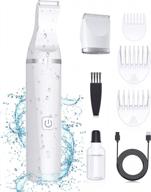

31 Review

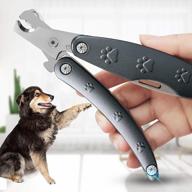

35 Review

What Are Some Common Mistakes To Avoid When Holding The 7.0" 440C Up-Curved Dog Grooming Thinning Shear Hair Cutting Scissor?
Here are some common mistakes to avoid when holding the 7.0" 440C Up-Curved Dog Grooming Thinning Shear Hair Cutting Scissor:
- Bending the wrist too much: It is recommended to keep the wrist straight to avoid strain and injury.
- Gripping the scissors too tightly: This can cause fatigue and reduce your control over the scissors.
- Using the whole arm to move the scissors: This can lead to uneven cuts and make it harder to control the scissors3.
- Holding the scissors too far away from the blades: This can reduce your precision and control over the scissors.
- Not adjusting the tension of the scissors: The tension should be adjusted to suit the type of hair you are cutting.
- Cutting too much hair at once: This can lead to uneven cuts and make it harder to achieve the desired look.
- Not taking breaks frequently: Taking breaks can help you check your progress and avoid cutting too much hair at once.








